- Home |
- About Us |
- Services |
- Our Doctors |
- Resources |
- Contact Us |
- Book Appointment
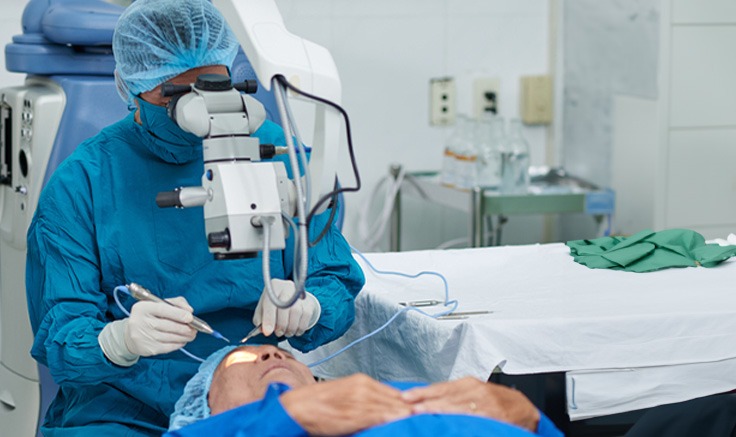
What is cataract ?
Our eyes contain a natural lens that, in its clear and healthy state, bends (refracts) light rays to help us see clearly. A cataract occurs when this lens becomes clouded, impairing its ability to efficiently transmit light and leading to a decrease in vision.
Cataracts tend to develop gradually and can affect one or both eyes. They are particularly common among older adults and can interfere with everyday tasks such as reading, driving, and recognizing faces.
Book Appointment
Causes of cataract?
While aging is the most common cause of cataracts, other factors can contribute, including:
- Family history
- Diabetes
- Eye injuries
- Excessive sun exposure
Symptoms of Cataract?
Having a cataract is like looking through a foggy window—everything appears blurry, colors may fade, and light sensitivity increases. Cataract symptoms include:
- Blurry or cloudy vision
- Double vision ( seeing two images)
- Difficulty seeing at night
- Increased sensitivity to light
- Colours appearing faded or yellow
- Frequent changes in eyeglass prescription
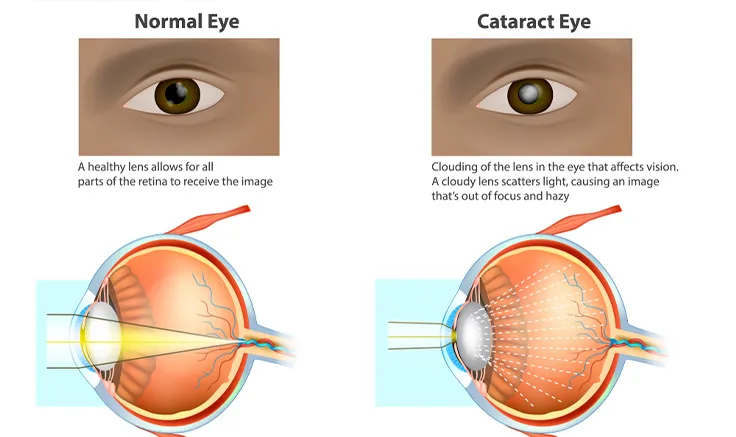
Types of Cataract Surgery:
Cataract surgery is the most effective way to restore vision in individuals affected by cataracts. There are different types of cataract surgery, each designed to suit the specific needs of the patient. In this article, we'll explore the various cataract surgery options, their benefits, and how to choose the right one for your condition.
- 1. Phacoemulsification (Microincision Cataract Surgery/MICS):
Phacoemulsification, commonly referred to as laser-assisted cataract surgery, is the most popular and advanced method for cataract removal. This technique uses ultrasound waves to break up the cloudy lens into small fragments, which are then gently suctioned out of the eye. The procedure is minimally invasive, offering faster recovery times and less risk of complications.
Benefits of Phacoemulsification/MICS:
- • Shorter recovery time
- • Reduced risk of infection
- • Minimally invasive procedure
- • Faster return to normal activities
- • Precise and accurate lens removal
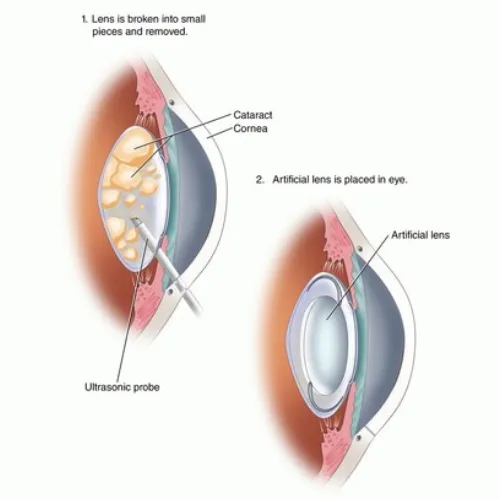
- 2. Femtosecond Laser-Assisted Cataract Surgery (FLACS):
Femtosecond laser-assisted cataract surgery is a cutting-edge, laser-based procedure that uses precise laser technology to perform key steps of the cataract removal process. This method enhances accuracy and improves overall outcomes, especially for patients with astigmatism or those requiring complex intraocular lens implants.
Benefits of Femtosecond Laser Surgery:
- • Enhanced precision and accuracy
- • Ideal for patients with astigmatism
- • Reduces the need for manual incisions
- • Faster healing time
- • Minimal discomfort during recovery

- 3. Extracapsular Cataract Surgery:
Extracapsular cataract surgery is typically recommended for more advanced cases where the cataract is too dense to be broken up using phacoemulsification. In this procedure, the surgeon removes the cloudy lens in one piece while leaving the capsule that holds the lens in place. A new intraocular lens (IOL) is then implanted to restore vision.
Benefits of Extracapsular Surgery:
- • Suitable for dense cataracts
- • Effective for complex cases
- • Allows for implantation of premium IOLs for better vision quality
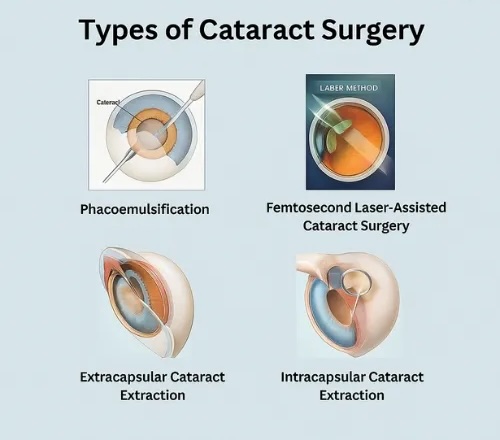
Intraocular Lenses (IOLs) for Cataract Surgery
Intraocular Lenses (IOLs) for Cataract Surgery: Types and Benefits
Choosing the right Intraocular Lens (IOL) is crucial for achieving optimal post-surgery vision after cataract surgery. At Kailash eye Care, we offer a wide range of premium IOLs designed to meet the unique needs of our patients. Below, we explore the different types of IOLs available, their benefits, and how to select the best lens for your lifestyle and vision requirements.
Multifocal IOLs
Purpose: Multifocal IOLs are specially designed to correct both near and far vision. These lenses feature multiple focal points.
Advantages:
- Reduces reliance on reading glasses and bifocals after cataract surgery.
- Provides clear vision for daily activities like reading, using mobile devices etc.
- Ideal for patients looking to minimize their dependence on corrective eyewear.
Best for: Patients who desire clear vision at multiple distances without glasses.
Trifocal IOLs
Purpose: Trifocal IOLs represent the latest advancement in lens technology, offering vision correction across three distinct ranges: near, intermediate, and far.
Advantages:
- Seamless vision from close-up tasks (like reading), to mid-range activities (like working on a computer), and long-distance vision (like driving).
- Ideal for individuals who need to perform a variety of tasks without switching between glasses.
Best for: Active individuals who want clear vision at all distances.
EDOF Lenses
Purpose: EDOF lenses provide a continuous range of vision, with a focus on intermediate distances. Perfect for digital device users.
Advantages:
- Ideal for individuals who spend a significant amount of time on computers, tablets, or reading.
- Reduces glare and halos, making it an excellent choice for those who frequently drive at night.
- Enhanced depth of field offers clearer vision across a broader range.
Best for: Patients with an active, digital-focused lifestyle.
Toric IOLs
Purpose: Toric IOLs are specially designed to correct astigmatism in addition to cataracts. These lenses feature different powers for correcting irregularities.
Advantages:
- Corrects both astigmatism and distance vision in one procedure.
- Reduces or eliminates the need for glasses or contact lenses after surgery.
- Perfect for patients with moderate to severe astigmatism.
Best for: Individuals with astigmatism seeking correction in one procedure.
Aspheric IOLs
Purpose: Aspheric IOLs mimic the natural shape of the human lens, offering better light focusing and enhanced contrast sensitivity.
Advantages:
- Provides sharper vision, particularly in low-light conditions like nighttime driving.
- Reduces glare and halos, which are common with traditional spherical IOLs.
- Closely replicates the optical performance of the eye's natural lens.
Best for: Patients wanting enhanced clarity in low-light environments.
Myths and Facts
- Myth: I should wait until my cataract worsens.
- Fact: Early treatment means less complicated surgery and quicker recovery. It's like fixing a small problem before it turns into a big one.
- Myth: Cataract surgery is painful.
- Fact: Modern cataract surgery is quick and relatively painless. Most patients find it less uncomfortable than a dental cleaning.
- Myth: I’ll need to stay in the hospital for days.
- Fact: Not at all! Most cataract surgeries are done on an outpatient basis, and you can go home the same day.
- Myth: I need to wait until I’m almost blind to get surgery.
- Fact: You don’t need to wait until cataracts impair your daily life. Once cataracts start interfering with activities like reading or driving, it’s time for cataract surgery.
Did You Know?
Cataracts are the leading cause of vision loss worldwide. While we can't prevent them entirely, protecting your eyes from UV rays and having regular eye exams can slow their progression. Regular check-ups are essential for catching cataracts early and preventing further complications.
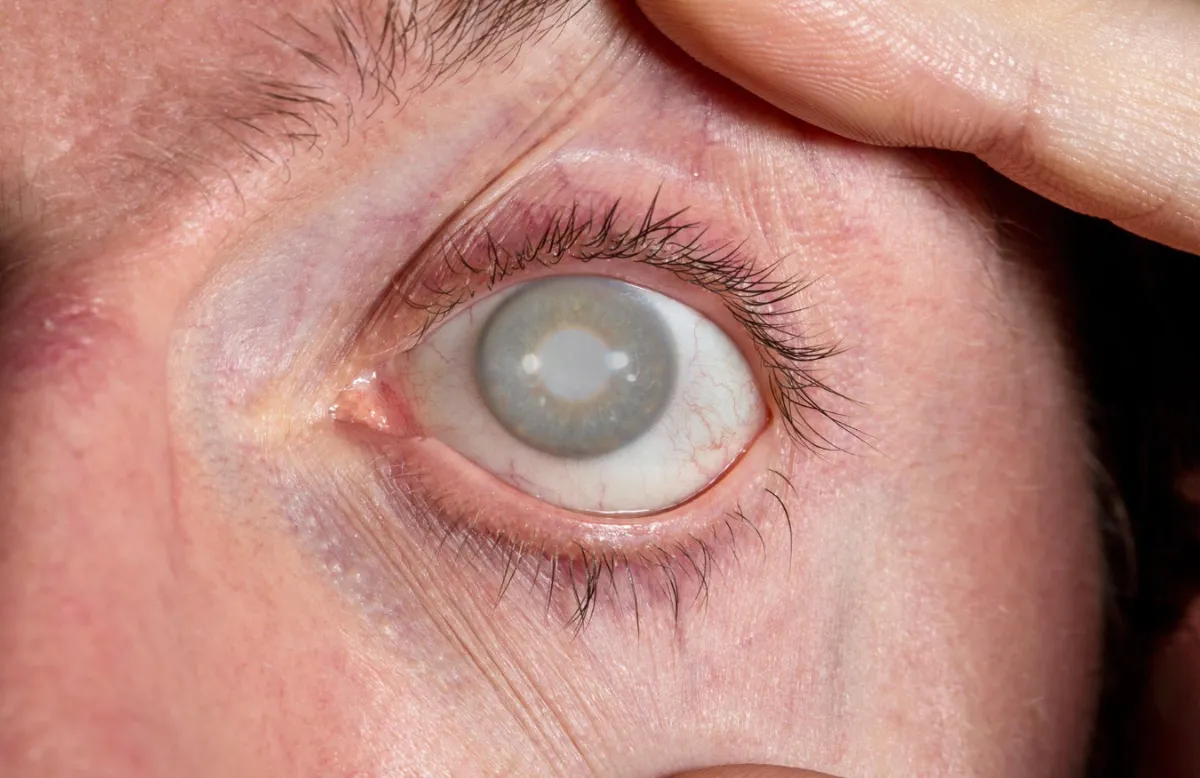
Book an Appointment Today at Kailash Eye Care!
Cataract surgery has evolved significantly over the years, offering a variety of techniques that cater to different patient needs. Whether you choose traditional methods or advanced laser-assisted techniques, cataract surgery is a safe and effective way to restore vision. If you’re experiencing cataracts, book your appointment today with our experts to explore your options.



